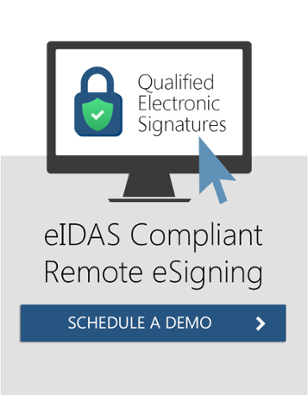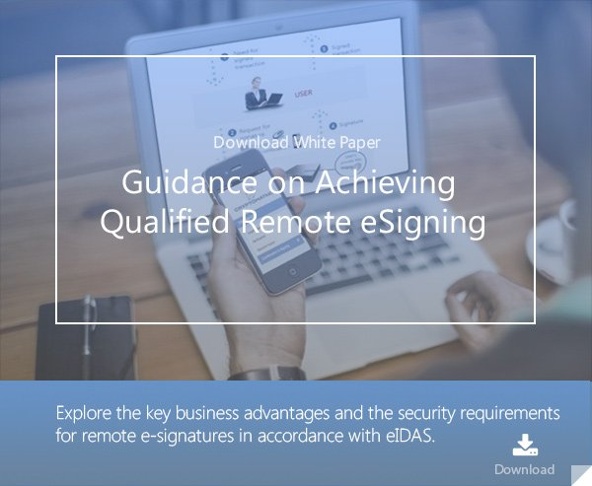
- Home >
- EU's CEF Building Blocks: eID, eSignature & eDelivery
The CEF building blocks of the digital service infrastructure, as defined under the Connecting Europe Facility (CEF), cover essential components like user identification and authentication, communication, invoicing, payment, and electronic service delivery.
In this article, we dive deeper into each block and how they come together to improve eDelivery processes in the EU.
Established in 2014, the Connecting Europe Facility is a funding instrument that works towards creating an interconnected Europe. It offers grants and other financial support (like guarantees and bonds) to support projects that aim to realize the goal of a pan-European energy, transport, and digital service infrastructure.
The CEF building blocks are essentially software, services, and specifications that enable digital service delivery in both the public and private domains.
eDelivery
eDelivery is a collection of distributed nodes designed to exchange relevant information between stakeholders in a digital transaction. The eDelivery specifications are standardized and this allows them to be used by various organizations that might otherwise be using a wide variety of IT systems. These nodes can be used across Europe by national or regional organizations, citizens, public administrators, and businesses.
Source: ec.europa.eu/cefdigital
eID
The eID block provides a suite of standards and services for electronic identification across the European Union. With this system, EU citizens can use their national electronic IDs to access services across the EU without having to get a new eID if they travel or move to another EU country. The basic idea is to take the existing eID systems across member states and make them all work together in a seamless manner. The eIDAS regulation provides the technical standards that help to achieve this.
 eSignature
eSignature
Electronic signatures are a digital version of their handwritten counterparts. They offer a way for a signatory to agree to be legally bound by the terms mentioned in the signed document. The eIDAS regulation provides the conceptual and technical backbone for the use of electronic signatures in the EU.
Electronic signatures let users enter into business contracts, perform financial transactions, and access public services. eSignatures must therefore provide a mechanism that is safe, reliable, and easy to use for the entire population.
eInvoicing
Invoicing and managing payments and receivables is still a manual process for many businesses. The reason for this is the use of non-standardized formats which makes it difficult to automate, even if scanning and machine reading software is used. This is where eInvoices come in.
eInvoices use standardized formats to capture all essential information which can be read easily by AP/AR software (Accounts Payable/ Accounts Receivable). This makes the invoicing and payment process a lot easier, faster, cheaper, and more accurate.
eTranslation
The EU has 24 official languages and three different scripts. For digital services to be truly borderless across the EU would require breaking the language barrier. eTranslation builds upon the existing machine translation software of the EU (MT@EC) and standardizes service delivery across the board, making systems language agnostic.
Blending the Building Blocks
The strength of the initiative comes when integrating the CEF building blocks into a seamless eDelivery process. This includes signed invoices and documents in various languages (provided by an authenticated invoicing party) and guaranteed data integrity, protected through a digital signature.
Looking at the effects of acceleration, simplification, and enhanced security in this example, a complete reshuffling and streamlining of business interaction in Europe can be expected - with the birth of many new services and an emergent and vibrant digital single market as a consequence. It will be interesting to see how the markets around the EU will line up around these blocks. Hopefully, CEF-based digital transactions will not remain limited to areas under EU jurisdiction.
References and Further Reading
- REGULATION (EU) No 1316/2013 establishing the Connecting Europe Facility, amending Regulation (EU) No 913/2010 and repealing Regulations (EC) No 680/2007 and (EC) No 67/2010(12/2013), by the European Parliament and the European Council
- Selected articles on Authentication (2014-18), by Heather Walker, Luis Balbas, Guillaume Forget, Jan Kjaersgaard, Dawn M. Turner and more
- Selected articles on Electronic Signing and Digital Signatures (2014-todays), by Ashiq JA, Guillaume Forget, Jan Kjaersgaard , Peter Landrock, Torben Pedersen, Dawn M. Turner, Tricia Wittig and more
- The European Interoperability Framework - Implementation Strategy (2017), by the European Commission
- Proposal for a DIRECTIVE OF THE EUROPEAN PARLIAMENT AND OF THE COUNCIL amending Directive (EU) 2015/849 on the prevention of the use of the financial system for the purposes of money laundering or terrorist financing (2016), by the European Commission
- REGULATION (EU) 2016/679 on the protection of natural persons with regard to the processing of personal data and on the free movement of such data, and repealing Directive 95/46/EC (General Data Protection Regulation) (2016), by the European Parliament and the European Council
-
Proposal for a REGULATION concerning the respect for private life and the protection of personal data in electronic communications and repealing Directive 2002/58/EC (Regulation on Privacy and Electronic Communications), (2017), by the European Parliament and the European Council
- Revised Directive 2015/2366 on Payment Services (commonly known as PSD2) (2015), by the European Parliament and the Council of the European Union
- REGULATION (EU) No 910/2014 on electronic identification and trust services for electronic transactions in the internal market and repealing Directive 1999/93/EC (2014) by the European Parliament and the European Commission
-
DIRECTIVE 2013/37/EU amending Directive 2003/98/EC on the re-use of public sector information (2013) by the European Parliament and the Council
Image: The Beginning, courtesy of Jukka Zitting, Flickr (CC BY 2.0)

